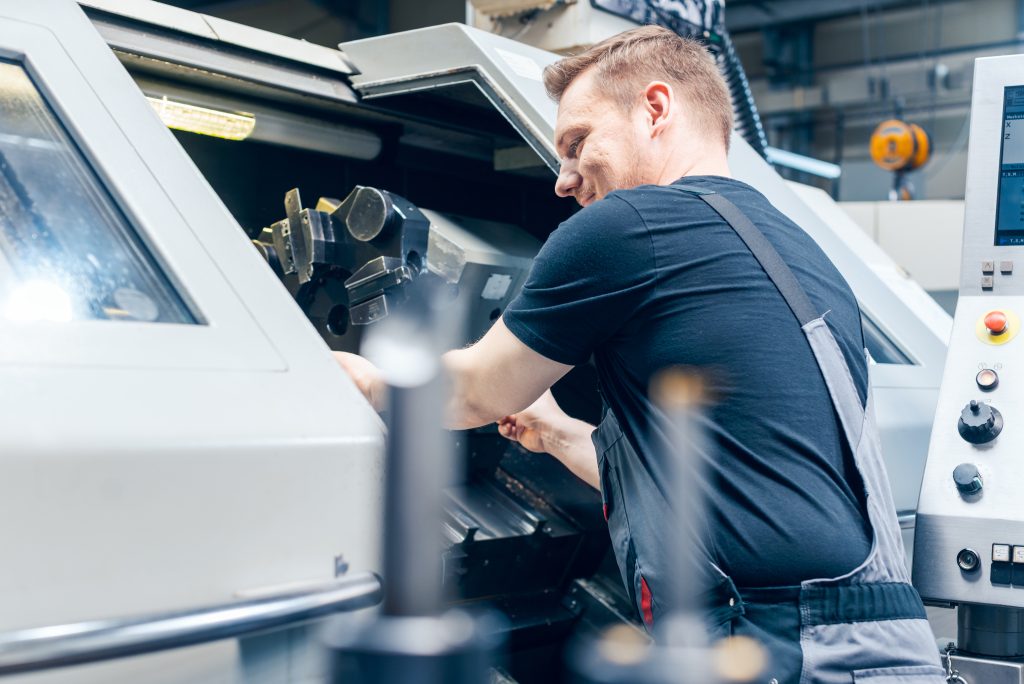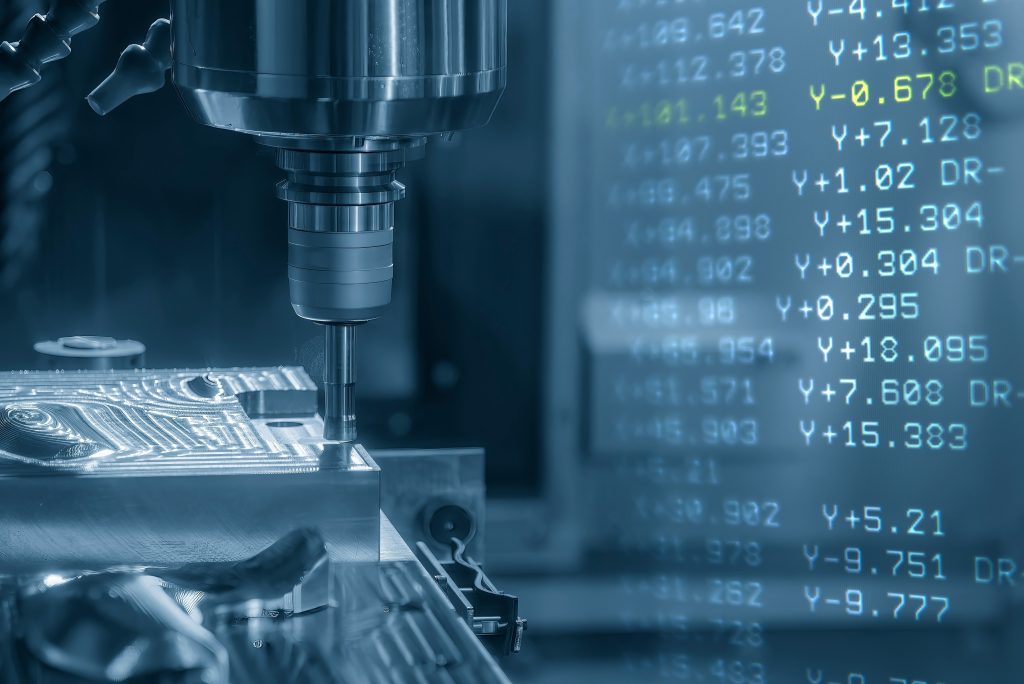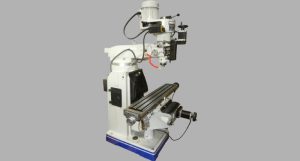CNC machining is widely employed in the manufacturing industry due to its high precision and fast processing capabilities.
What is CNC machining
Definition
The full name of CNC is computerized numerical control. In manufacturing, CNC typically refers to computer numerical control machining, which is a processing method where tools are controlled by a computer.
History
In the late 1950s, the first CNC machine tool was created at the Massachusetts Institute of Technology (MIT) in the United States.In the early stages of CNC machining development, magnetic tapes and punched cards were used as program input mediums, alongside the application of the CNC programming language APT. With the advancement of microprocessors and computer technology, the control systems also continued to strengthen.Additionally, the utilization of CAD and CAM technologies has enhanced the capabilities of CNC machining.
CNC machining vs Manual machining
Both CNC machining and manual machining are commonly used methods of manufacturing.
There are significant differences between CNC machining and manual machining in terms of operation, precision, and efficiency.In contrast, manual machining involves human-operated machinery, resulting in lower precision and production speed compared to CNC machining.

Applications & Advantages
The development of CNC machining is closely linked to technological advancement. Today, CNC machining is an indispensable presence in the manufacturing industry and has also expanded its reach into other fields.
Applications:
Aerospace: aircraft wings, landing gear components, aircraft fairings.
Woodworking Industry: intricate wooden geometric furniture, carving to remove minimal material for text and designs.
Electrical Manufacturing: electric heating plates, installation holes for circuit board components, copper or aluminum heat sinks.
Medical Equipment: Precision metering pumps, nozzles, sterile packaging.
Advantages:
High Precision Products: Controlled by digital coding during production, resulting in high product precision.
Fast Production Efficiency: Utilizing CNC programming to achieve rapid production speeds and high efficiency.
Broad Processing Capabilities: Able to manufacture parts with complex shapes and structures.
Cost-Effective: Minimizes material waste, reducing the cost of mass production.
CNC Machining Operations
Common types of mechanical CNC machining include:
- Drilling: Drilling is the process of using a rotating tool to create cylindrical holes in a workpiece, commonly used for spare parts.
- Milling: Milling involves securing the workpiece while a cutting tool rotates to remove excess material from the workpiece, typically resulting in products with rotational surfaces.
- Turning: Turning is a process where a cutting tool is fixed and the workpiece rotates to remove excess material, usually resulting in symmetrical products.
- Cutting: Cutting involves slicing or severing materials.
- Grinding: Grinding is utilized to refine the surfaces of precision-engineered parts.
CNC Machining Process
CNC machining is an automated method of manufacturing that primarily involves the following four steps:
Step 1: Design a CAD model.
Create a 3D model of the product using CAD software.
Step 2: Convert the CAD file to a CNC program.
CNC machines cannot directly read CAD models. CAD files need to be imported into CAM software, which converts the 3D model into G-code that the CNC machine can read.
Step 3: Prepare the CNC machine
Install fixtures and cutting tools, also ensure to inspect the cutting tools for any damages.
Step 4: Perform machining operations.
Once the workpiece is secured, G-code is generated, instructing the machine to cut the workpiece until the machining is completed.
Popular CNC Control Software
You should know that CNC software significantly affects the final outcome of CNC machining.
- CAD: CAD, short for Computer-Aided Design, is commonly used in the architecture and manufacturing industries to design 2D drafts and 3D models, providing a more intuitive representation.
- CAM: CAM, or Computer-Aided Manufacturing, can automatically program and generate machining codes. Furthermore, it can plan paths and design cutting parameters based on the workpiece material.
- CAE: CAE, which stands for Computer-Aided Engineering software, is used in CNC machining to analyze products, optimize product designs, and ultimately ensure satisfactory product outcomes.
CNC Programming and G-codes
CNC programming is typically written by operators to convert the workpiece features and machining requirements into code recognizable by CNC machines, known as G-code.
G-code is a CNC programming language responsible for controlling CNC machine operations, including cutting speed and feed rate.

Materials Suitable for CNC Machining
For different materials, different speeds and feed rates are set for the workpiece. If you are considering CNC machining as a method, you will need to understand which materials are suitable for CNC machining.
- Metals: Metals are the most commonly used materials in CNC machining, with nearly any type of metal being processable on CNC machine tools.
- Plastics: Workpieces made of ABS (Acrylonitrile Butadiene Styrene), Nylon, and Polycarbonate materials can be processed using CNC machining.
- Wood: Wood can be CNC machined to create furniture and decorative items.
- Composite Materials: Composite materials typically consist of two or more materials, with high hardness, making them suitable for CNC machining.
CNC Machining Best Practice
During CNC machining, operators must adhere to the operating procedures and safety guidelines.
1. Before starting the operation:
Operators can use software to simulate the machine’s running status to avoid potential risks.
Operators must check the work environment, machine condition, tool wear, and ensure that fixtures and workpieces are securely clamped.
2. During operation:
Closely monitor the machining status of the machine tool, use measuring instruments for quality control, including inspecting dimensions, shapes, and surfaces.
3. After the operation:
Operators need to record the machine tool’s running status and processing parameters.
Remember to clean the machine tool thoroughly and ensure that the machine tool is completely shut down.
Seeking CNC Machining Services
Good service can solve many problems for you. You need to pay attention to the following points:
- Customized processing: Develop a specialized plan based on the CAD drawings or samples provided by the customer.
- Material selection: Offer advice on material selection and provide good purchasing channels.
- Processing methods: Choose the most suitable processing method based on customer requirements and samples.
- Design optimization: Service providers should design optimized solutions to reduce costs, improve production efficiency, and product quality.
- Mass production: Ensure product quality and delivery time during mass production.
Purchase CNC Machines
When purchasing CNC machines, you need to consider various factors, including type, price, and training services.
1. CNC Machines Types
CNC machine tools can be categorized by the number of axes:
2-Axis CNC machines: These machines have X and Y axes, allowing movement in horizontal and vertical directions, commonly used for simple part manufacturing.
3-Axis CNC machines: CNC machines with the capability to move along the X, Y, and Z axes.This is the most common type of CNC machine.
4-Axis CNC machines: These machines have an additional A axis compared to 3-axis machines and are suitable for machining complex parts.
5-Axis CNC machines: Similar to 4-axis machines in movement, 5-axis machines offer additional directions for part machining, making them suitable for complex and precision part manufacturing.
2. Choose Right CNC Machines
Selecting a CNC machine is no simple task and requires considering several aspects. Here are some relevant examples:
Machining requirements: Clarify the material type, machining precision, size range, and performance parameters.
Budget: Consider equipment cost, subsequent maintenance expenses, and operational costs.
Quality and brand: Choose a reputable CNC machine manufacturer known for good quality and reputation.
Special features: Consider whether it is equipped with an automatic tool changing system, CNC system, etc.
After-sales service: Good after-sales service and technical support are beneficial for manufacturing processes.
3. CNC Machine Cost
When purchasing a CNC machine, you need to consider not only the equipment’s price but also the following factors:
Tooling: Prices vary for different types, materials, and brands of tools, and custom tools are more expensive.
Material: Higher material hardness increases tool wear and demands higher tool quality, leading to higher prices.
Quantity: Costs for large-scale production are lower than for individual processing.
Tolerance: Smaller tolerances result in higher prices.
Complexity: The more complex the parts to be machined, the higher the processing costs.
4. CNC Machinist Training
CNC machining demands a high level of expertise, where operators must undergo advanced training before operating CNC machines. Operators need to demonstrate a thorough understanding of machine operations, be proficient in interpreting blueprints, and possess the ability to program using CAD and CAM software. During the machining process, they must exert quality control to ensure the precision of the work. Moreover, operators should maintain a strong focus on safety and possess effective communication skills.
CNC Machining Alternatives
Apart from CNC machining, there are other options for processing.
3D Printing: Using instructions from CAD and 3D models, materials are printed into the desired shapes, suitable for processing simple parts and small-batch production.
Injection Molding: This is a plastic processing technique where molten plastic material is injected into a mold to shape it, suitable for processing simple parts and large-batch production.
Die Casting: This is a metal processing technique where molten metal is injected into a mold to shape it, suitable for processing simple parts and large-batch production.
CNC Machining Trends
As technology evolves, the trends in CNC machining continue to change and develop.
- In terms of manufacturing:
CNC machining is becoming more data-driven, smarter, and automated, allowing for automatic optimization and monitoring of production processes to ensure product quality and efficiency, while reducing the need for manpower and resources. As automation improves, it can handle more complex parts and ensure precision.
- In terms of environmental protection:
Choosing sustainable materials, streamlining machining equipment and processes, and reducing material waste.
Conclusion
That’s all about CNC machining. If you’d like to learn more about CNC and CNC machines, please contact us. Thank you for reading!











